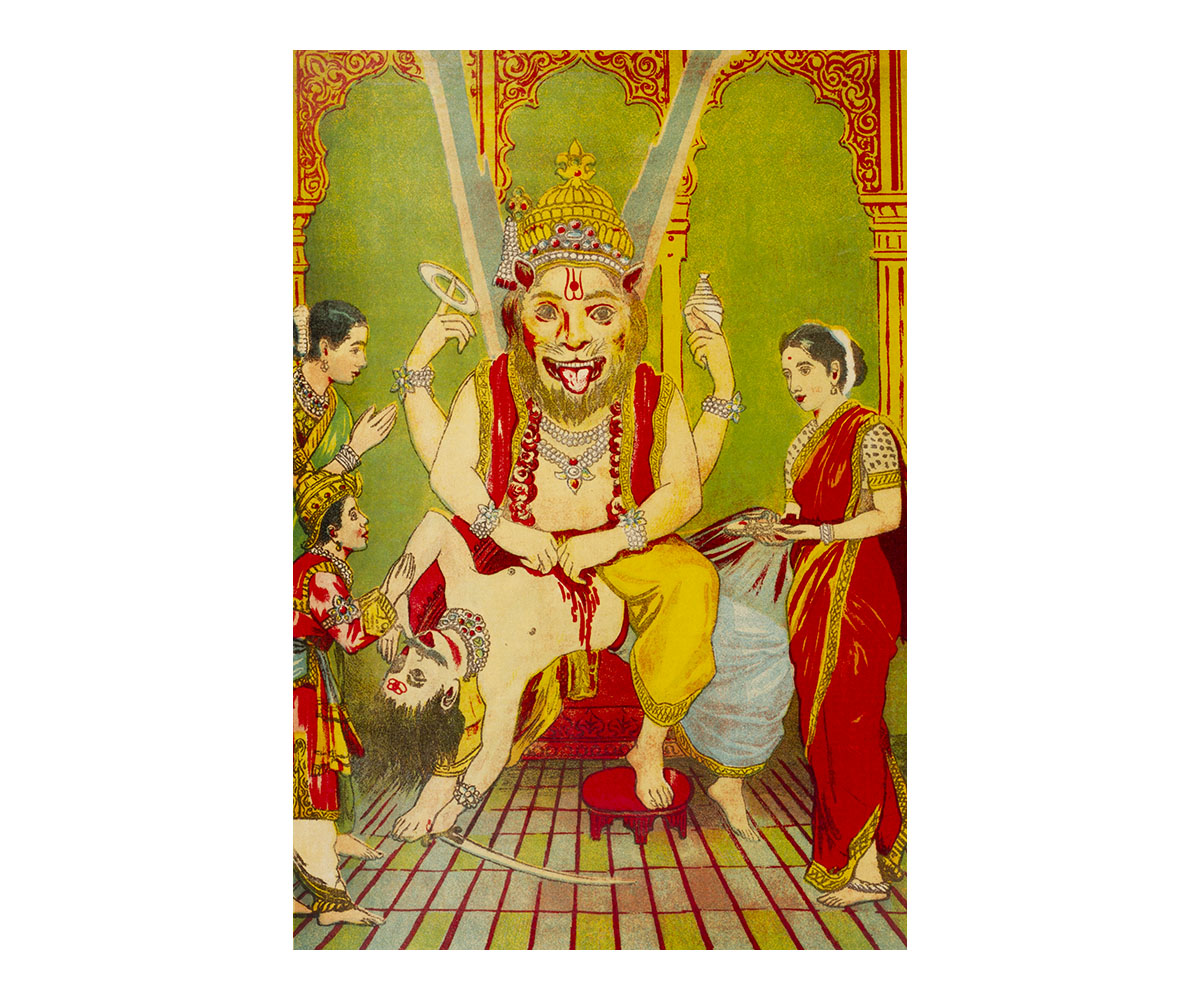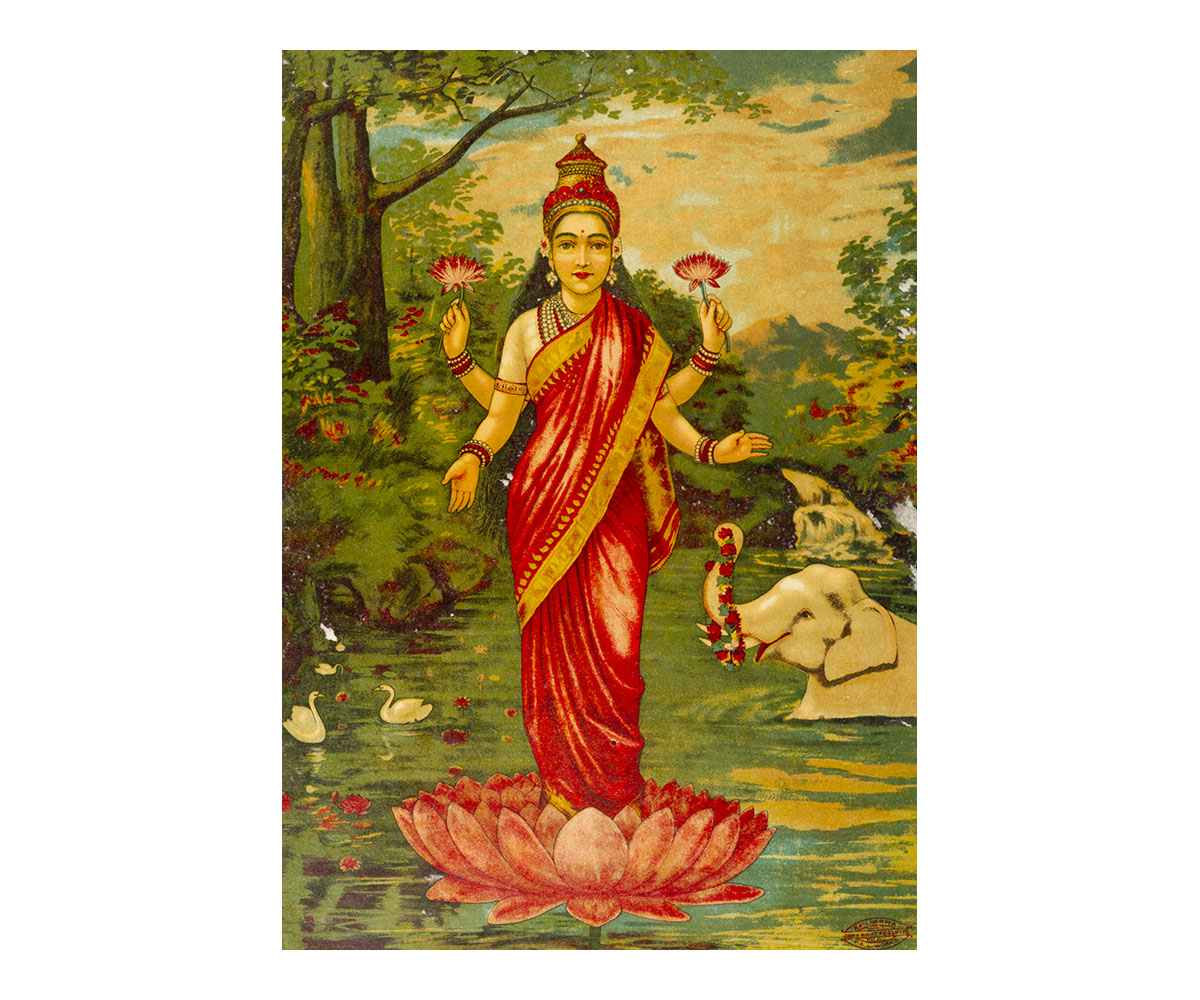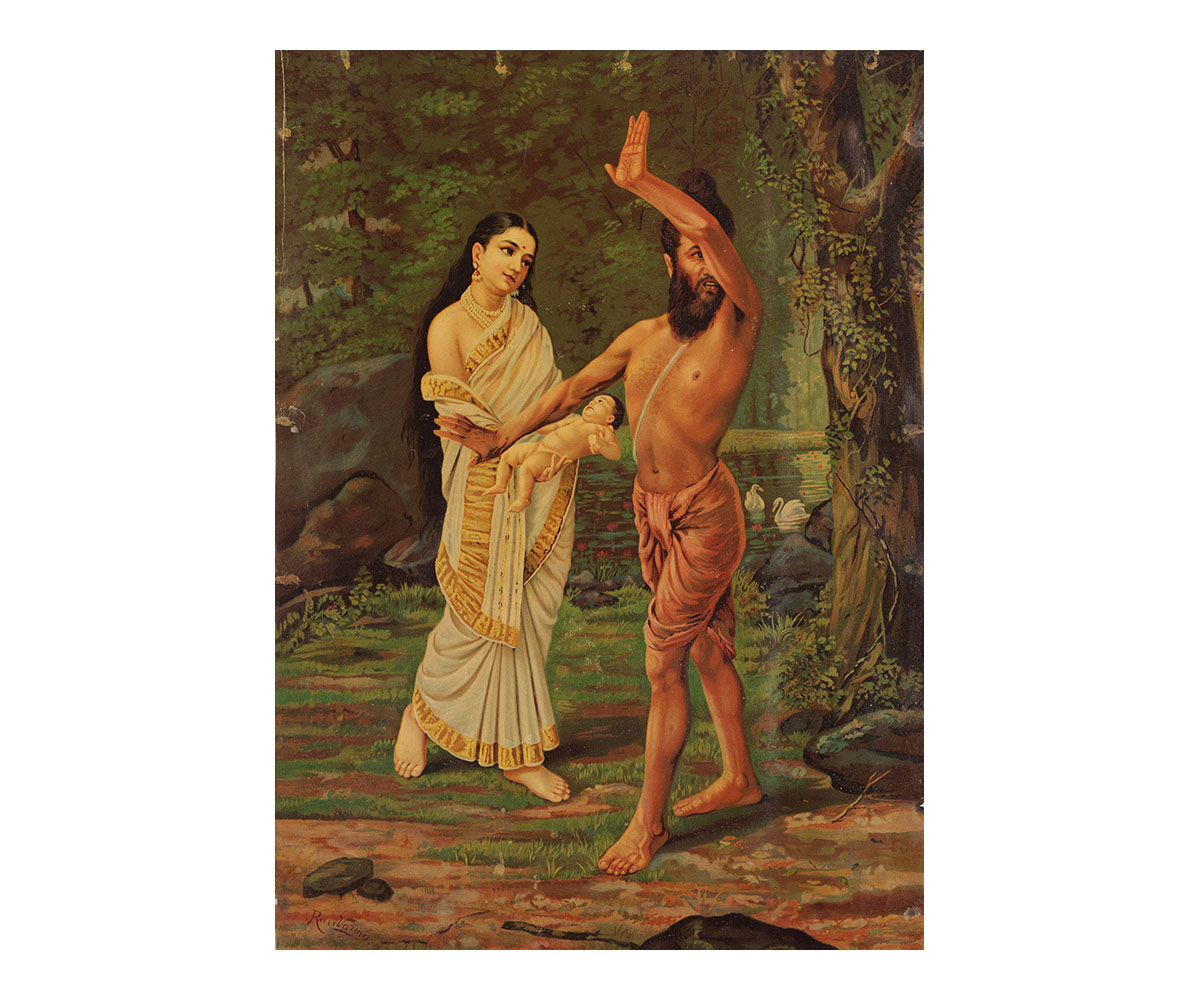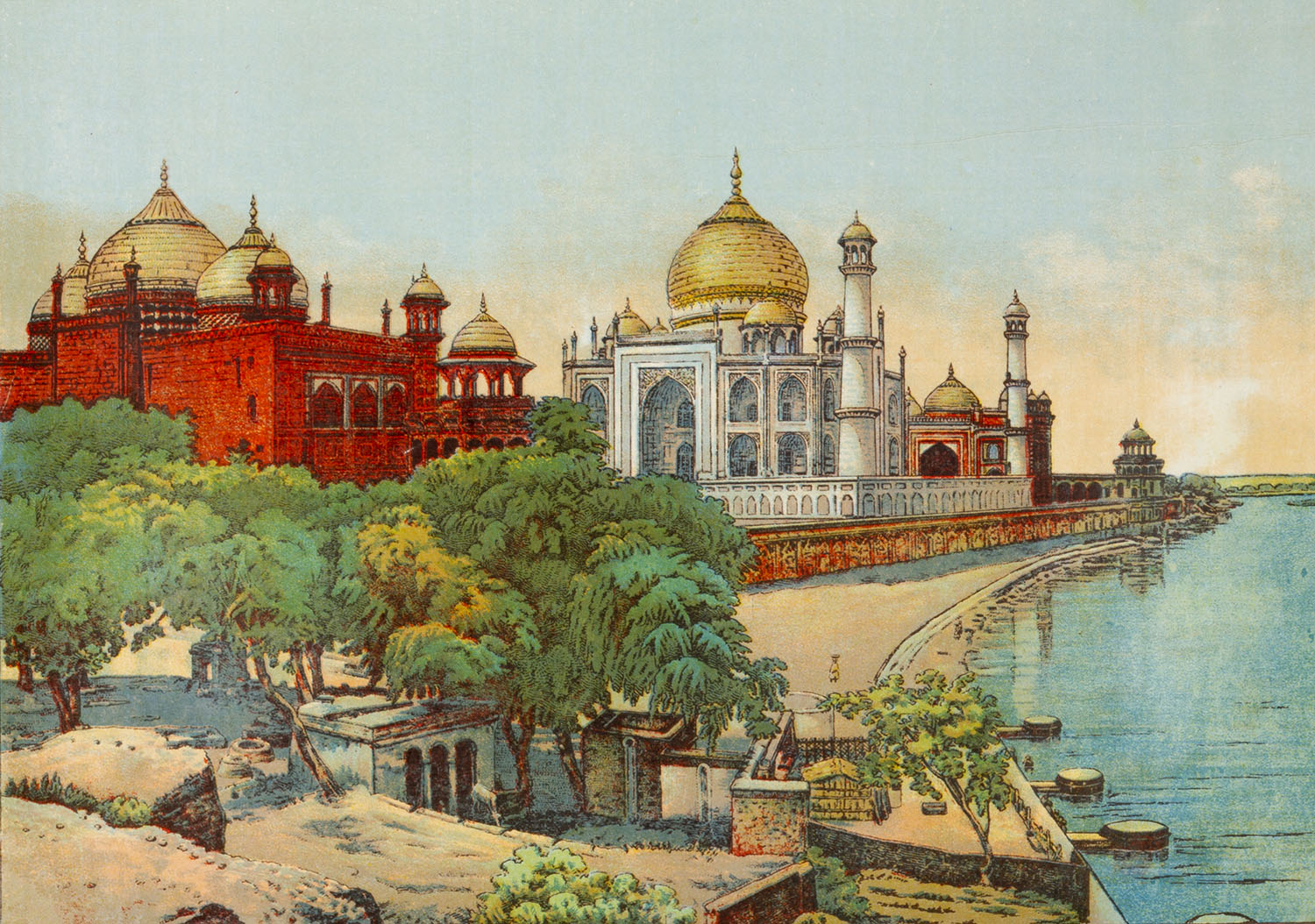ARTICLE
Oleography
A large-scale colour printing technique, oleography is a form of lithography that incorporates a large colour palette for the production of high-quality art and commercial prints. The process is so named — oleum means “oil” and graphein means “to write” — for its use of grease- or oil-based drawing and printing inks, as also its ability to closely recreate oil paintings through multiple cycles of stamping with grease based crayon or ink and burnishing of the imprinted surface.
The technique, also known as chromolithography, involves the use of multiple lithographic stones, sometimes as many as thirty, with one stone for each colour to be rendered in the final image. Unlike earlier printing techniques, this is planographic, which means that the printing surface is flat, rather than raised or depressed. Though thought to have been invented by French lithographer Godefroy Engelmann in 1837, commercial colour printing itself was patented earlier in 1835 by British printer George Baxter. It grew popular in the 1860s but was superseded in the twentieth century by more advanced printing technologies such as offset printing. In India, it came to prominence in the late nineteenth century through the iconic colour prints produced by the Raja Ravi Varma Fine Arts Lithographic Press (FAL), when it commenced operations in 1894, and continued to enjoy popularity till the early twentieth century.
The labour-intensive process of oleography requires a master printer, apart from an artist or designer. It is carried out in multiple steps that involve drawing, etching, inking, imprinting and finishing. The design is first traced onto a stone or plate — usually limestone or zinc — using drawing mediums such as tusche, crayon, lacquer or synthetic inks. The stone is then treated with a solution of gum arabic and weak nitric acid, which reacts with the stone and etches the area not covered in the grease-based design. This then prepares the stone to selectively receive ink after immersing the stones in water, by allowing only the etched areas to receive water. This is followed by inking, during which oil-based coloured ink is rolled onto the stone, so that ink is absorbed only by the greased area constituting the design and not the water-saturated blank areas. A paper is then placed onto the stone, which is run through a press to transfer the design from the stone onto the paper. A different plate or stone is prepared for each colour so that a paper is passed through the press multiple times. Techniques for additional shading or tonal gradations, such as Ben-Day dots and airbrushing, were later introduced.
The first oleographic print in India was the FAL’s Birth of Shakuntala in 1894. The popularity of Ravi Varma’s oleographs led to a proliferation of the technology in India, especially in Bombay (now Mumbai), Poona (now Pune) and Madras (now Chenna). This led to the emergence of popular or bazaar prints and the advent of print advertisements in the form of calendar art and print labels. Some of the prominent producers of oleographs with religious, theatrical and literary themes were Calcutta Art Studio, Poona Chitrashala Press and S.S. Brijbasi & Sons, Mumbai and National Litho Press, Virudhunagar.
Bibliography
Our website is currently undergoing maintenance and re-design, due to which we have had to take down some of our bibliographies. While these will be re-published shortly, you can request references for specific articles by writing to hellomapacademy@map-india.org.










